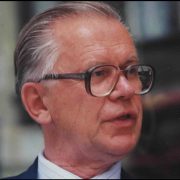Update: biography of Einer Boberg (1935-1995), who co-founded – with Deborah Kully – a world-class stuttering treatment centre in Edmonton, Alberta, Canada, in 1986
I have recently posted a research article based on my work to date for a biography about Einer Boberg (1935-1995), of Edmonton, Alberta, Canada.
The article, posted at the Preserved Stories website on August 2, 2023 and updated on September 17, 2024, is entitled:
The article deals among other things with the respective careers of Einer Boberg and Deborah Kully of Edmonton, Alberta.
Part of the information about their careers comes from journal articles about the history of stuttering as a field of scientific inquiry. Specialists in various fields read such articles – which, however, generally do not reach a vast audience of general readers.
A key task for the biography I am working on is to translate selections of such journal articles into everyday language – which a general reader can readily follow.
Structuring of an 8,000-word article
I have spent about a year working on the text of the above-noted research article.
The final version is about 8,000 words in length. Initially, I wrote several versions of about 13,000 words. In the process, I initially did much of my thinking about the contents as I was sitting at my laptop, tapping away.
In my early drafts, I found it hard to stay on topic – to stay on track. When I shared these early drafts with a small group of readers I’ve been in touch with during research for the biography, sometimes they noted I was meandering, not keeping to the topic at hand.
After about a year of meandering, I decided to spend some time just thinking about what I wanted to say, before I started typing. The final version has adhered to a tightly structured conceptual framework. The framework was in place, before I sat down again at my laptop.
From working on the article, I’ve also learned to address a range of topics in just a few words, rather than many. As well, I’ve learned to keep references to my personal encounters with stuttering treatment to a minimum. That way the story flows along much better than it otherwise would.
Fire Weather (2023)
A related task – aside from the task of translating journal articles into everyday language – concerns the translation of works of history – about Alberta, for example – into narratives suitable for a biography of a speech professional born and raised in Alberta.
What is of particular relevance for the biography is how the world appears from the vantage point of a team of clinicians and researchers from Alberta. It took me some time, before this realization, as a person who has lived most of his life in central Canada, occurred to me.
I have also developed a particular interest in the ways and means whereby the work of historians and other social scientists can be translated into everyday language.
Many writers of nonfiction excel at this task.
Among them is John Vaillant, who lives in British Columbia, author of Fire Weather: The Making of a Beast (2023).
Vaillant speaks about early Canadian history – such as in regard to the highly consequential role of the Hudson’s Bay Company in the generation of Canada’s origin story – in a way that captures the attention of the general reader.
Instead of a dry, grocery list of historical facts, regarding such a topic, he writes (p. 33), for example, that the fur trade
shaped Canada’s creation myth and set the tone for how extractive industries continue to operate there. Through this lens, Canada in general, and Alberta in particular, could be seen not as a “state in the guise of a merchant,” but as a merchant in the guise of a state. This colonial model, which systematically commodifies natural resources and binds local people to the trading post system with company store-style debt, has replicated itself in resource towns across the continent.
The history that Vaillant presents amounts to decidedly more than a grocery list of facts – in this illustration, about the Hudson’s Bay Company.
It’s my understanding that the book took about seven years for Vaillant to research and write. This is a thoroughly researched, well-written product, likely to reach a wide audience.
From Left to Right (2022)
As part of my research I have also read a book by Dale Eisler – From Left to Right: Saskatchewan’s Political and Economic Transformation (2022). This book has been very helpful, in bringing me up to speed on the recent history of the Prairie provinces – as seen through the eyes of people who live there.
The voice that Dale Eisler adopts in From Left to Right (2022) manages to present a perspective on historical processes which, again, is more than a grocery list of facts.
In Eisler’s case, the voice is of a nature which underlines that history entails a configuration of forces – the comprehension of which requires a certain sense of nuance. From a study of such a configuration of forces, certain key insights emerge. Among those insights is a strong realization – with regard to ways of seeing.
A person comes to realize, that is to say, that when we consider any region in the world, there are several different versions of history that we can choose from, when we seek to comprehend a given episode, or event, from many years ago.
Robert A. Caro – my role model for the writing of biography
As part of my research, I have also been reading many books about writing – the writing of fiction and nonfiction.
Writers of fiction are known to sometimes steer clear from relying on the use of outlines for the purpose of structuring their stories. The dynamics involved with the writing of nonfiction may be different, however, from what is at play in the writing of fiction.
I am particularly impressed by what I have read about the approach that Robert A. Caro has adopted in the course of a highly productive career as a nonfiction writer.
Click here to access the website of Robert A. Caro >
I have found that Caro’s book about writing, entitled Working (2019), serves as a great resource which guides my own work, as I proceed on my current biography project.
Caro’s chief interest as a writer is in how power is accumulated and enacted in a democracy.
As a writer, Caro seeks to ensure the reader gets emotionally involved in the narrative he is sharing. He has read many books about Lyndon Baines Johnson. In Caro’s view, if a writer simply presents the facts, related to what LBJ accomplished or orchestrated in a particular circumstance, and leaves it at that, then that will leave the reader cold.
As part of my research, I have been reading Caro’s Means of Ascent (1990), about Lyndon Johnson’s early political career. The book is Volume Two in a series entitled “The Years of Lyndon Johnson.”
I have also bought a copy of The Power Broker: Robert Moses and the Fall of New York (1974) but have not yet read it. It’s a long book. The original draft was even longer – very much longer, in fact.
In the published version, something in the range of about 350,000 words was actually deleted from the original text, at the insistence of a first-rate editor that Caro was working with. The editor also suggested that Caro’s future books should be in the form of volumes, rather than trying to cram too much material into a single book. Caro followed that advice and worked with the same editor for the first four volumes of his history of Lyndon Johnson.
A basic point that he makes in Working (2019) is that, early in his writing career, he learned there are two approaches that a person can adopt, in putting together a piece of writing.
There is one approach, in which a writer is “thinking at the typewriter” (so to speak). This is the way that Caro learned to work as a university student and later as a news reporter early in his writing career. This can be an effective method when a person is writing with a tight deadline in view. It is a form of writing which Caro excelled at early in his career.
A second approach, which he adopted as his writing career progressed, is decidedly different. In this other way of working, when he is writing a book, nothing gets written until Caro has put together one, two, or three legal-size pages which clearly state the message of the book. It might take him several months to write such a series of pages.
The pages which Caro prints out, and posts on his bulletin board, are on legal-size paper – his standard format when writing drafts.
After that, Caro writes a brief series of pages stating the essential points (without quotations or references to sources) of each chapter. He also sets aside a notebook for each chapter, where he assembles quotations, citations, and the like.
Then, when he starts to write his book, he takes care to ensure that whatever he writes adheres closely to his printed outline, which is posted on a bulletin board in the bare-bones, uncluttered office which functions as his writing space.
I was interested to learn that each of Caro’s books has taken at least about seven years to write (if I recall correctly from what I’ve read, regarding this point). From all indications it’s been time very well spent. The biographies he’s published are very highly regarded by critics and readers. For anybody with an interest in learning about the writing of first-rate biographies, Caro’s books, including his mini-memoir, Working (2019), are a great place to start.
Click here to add your own text
Click here to add your own text



Leave a Reply
Want to join the discussion?Feel free to contribute!